How Swimmers Can Use Yoga to Alleviate a Hunched Spine
'Text neck' and other problems can be remediated through yoga for better health and faster swimming
Many swimmers spend hours on smartphones gazing, head down, at the latest news and stock updates or texting. Habitual forward flexion of the cervical spine can lead to a chronic postural problem known as “text neck.” As postural imbalances progress, some muscles in the neck, back, and chest become inhibited and weakened while others become overly shortened and active.
Every inch the head sits forward of its normal alignment over the shoulder girdle creates an additional 10 pounds of stress on the spine beyond the average 12-pound weight of the head, according to “The Physiology of the Joints, Volume 3” by I.A. Kapandji. A person manifesting a 4-inch forward head shift asserts approximately 52 pounds of load on the spine, an exhausting way to move around. No wonder many swimmers can’t wait to dive into the pool.
A swimmer with a poorly aligned cervical spine will be unable to breathe without a drag-creating, exaggerated body roll or head lift. Health can be detrimentally affected as well. A 2016 article in the Journal of Physical Therapy Science associated extended smartphone usage with poor respiratory function.
Performing simple exercises and yoga postures that facilitate proper spinal alignment can remediate these musculoskeletal imbalances and be a game changer in and out of the water. Don’t worry—these exercises are easy to do even if you don’t practice yoga regularly.
Key Back and Neck Muscles
The trapezius muscles descend from the back of the head, extend across the back of the shoulders, and taper down to the middle of the back. Along with a deeper set of muscles, the rhomboids, the trapezius supports the scapulae (shoulder blades). They also support the head, straighten the spine, and maintain openness in the chest and frontal shoulders.
The multifidus muscles occur in grooves on either side of the vertebrae from the sacrum to the upper cervical spine (C2) and play a major role in extension and stabilization of the spine. They tend to be inhibited in individuals with upper postural issues, and this weakness can lead to discomfort and dysfunction in multiple parts of the spine.
The pair of sternocleidomastoid muscles in the front of the neck tend to be shortened in people with forward head posture. These overly tight muscles tend to drag the head farther and farther forward and make it difficult for them to turn the head within normal range or without discomfort. Overactive levator scapulae muscles along the back and side of the neck can result in a tendency to shrug the shoulders upward during arm movement, which can drag the scapulae up the back and create chronic neck tension and pain.
Yoga Remediation Activities
Hands and Knees Neck Stretch

This activity stretches the sternocleidomastoid and levator scapulae in the neck and also creates better awareness of an appropriate cervical spine position. In addition, it activates the multifidus muscles in the spine.
Begin by allowing your head position to lower so that you can sense it is hanging below the level of the rest of your spine. Now raise your head until it is higher than the rest of the spine. Avoid lifting the shoulders toward the ears. Raise and lower the head a few times and then reduce the amount of the movement until your head comes into a neutral alignment with the rest of your spine.
Turn your elbows in slightly so you feel a slight squeeze between the shoulder blades. Now sweep your gaze to the right corners of your eyes (without strain), and then turn your neck so you are looking over your right shoulder. Slowly sweep the tailbone to the right, transforming your spine into a “C” shape. Hold for 5 to 10 deep breaths before switching sides.
Trapezius Release and Chest/Side Body Stretch
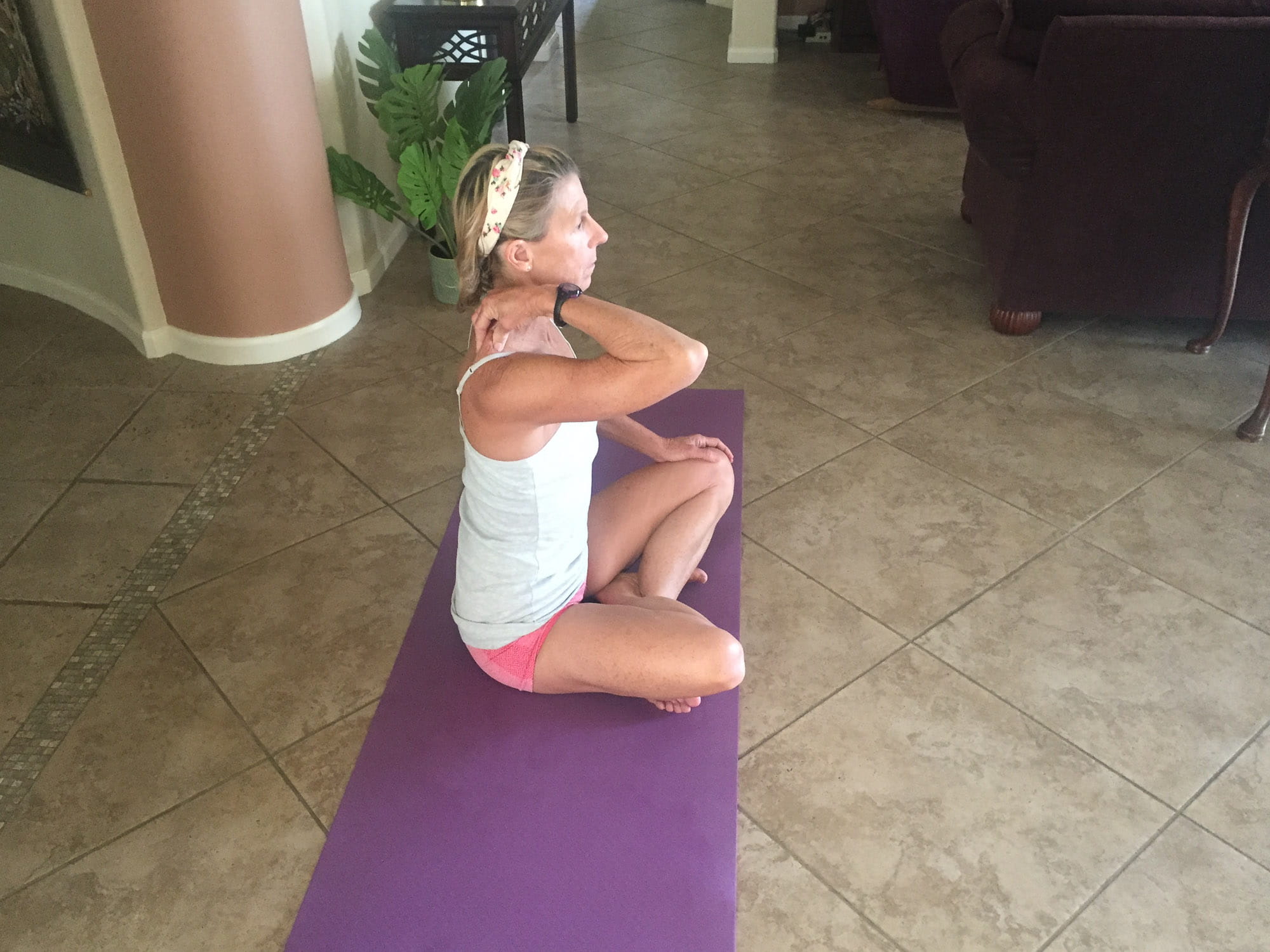
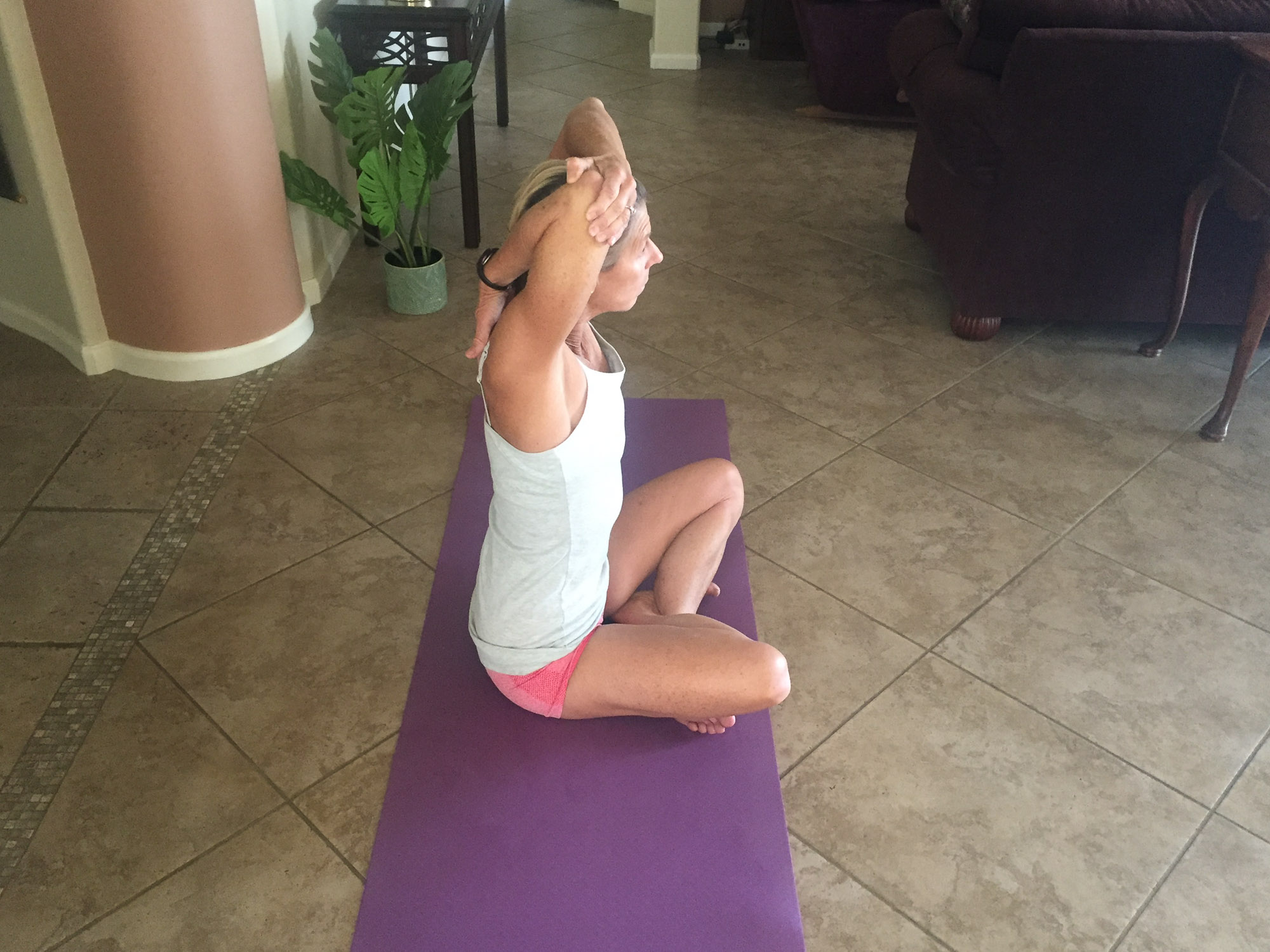
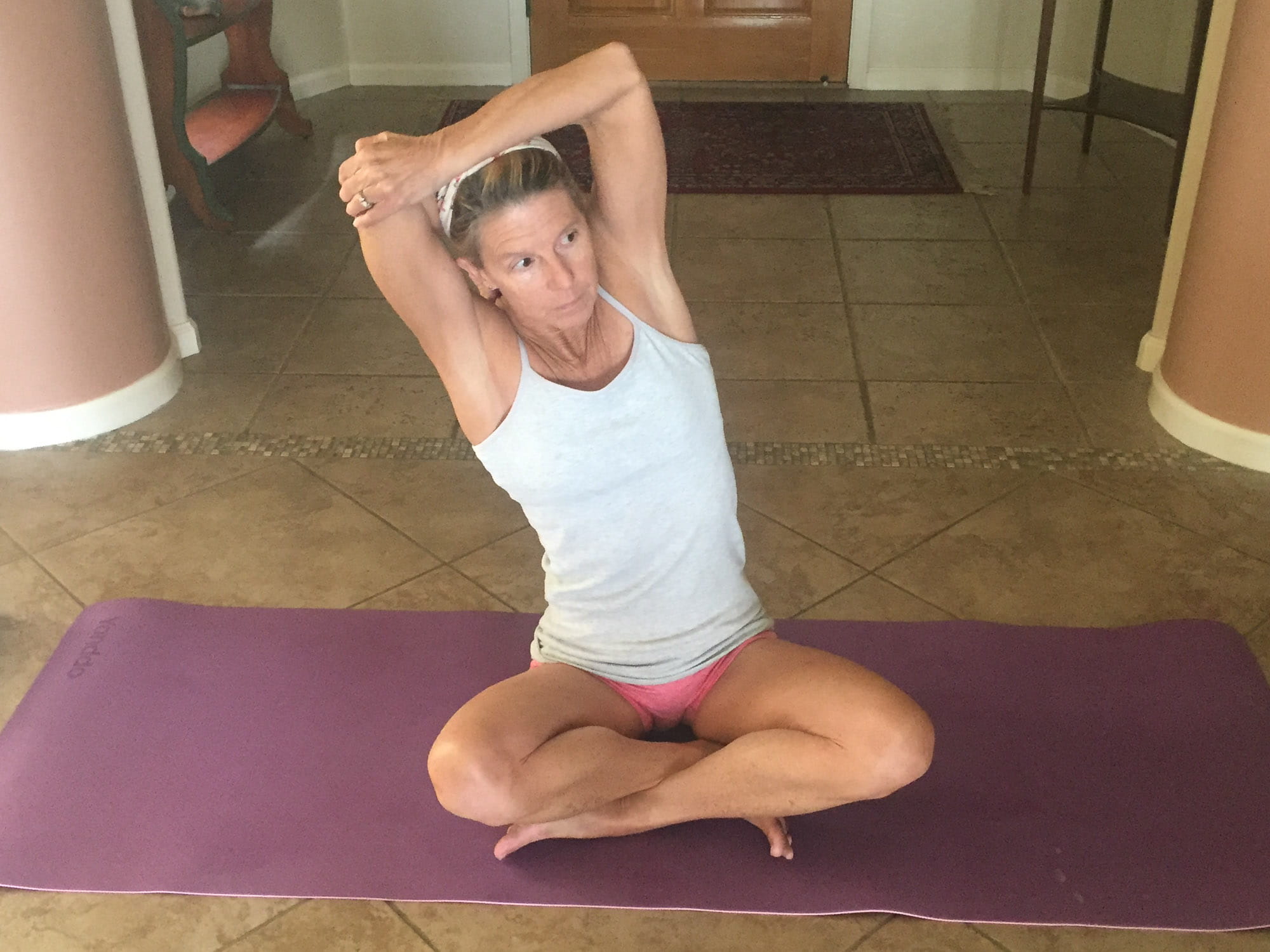
Sit on your mat in a cross-legged position. You can also do this seated in a chair, upright, scooted away from the back of the chair if that’s more comfortable. Reach back with your right hand like you’re trying to pat yourself on the back of your shoulder. Pinch the top of the trapezius muscle between your thumb and index finger and gently massage it. Notice the tightness of your muscle. Support your elbow with your left hand. Draw your shoulder back to release your upper trap muscles more.
Now raise your arm up with the left hand until the triceps are nearly perpendicular to the floor, resting the right hand on the upper back. You can still use your thumb to check for tightness. Snuggle the head back into the upper and lower arm, keeping your chin level and continue to pull your arm upward with your left hand. Slowly direct gaze to the left corners of your eyes and tip your body to the right while opening your chest more with a slight rotation to the left. Hold for five to 10 breaths and then release the stretch before switching sides.
Cobra Variation
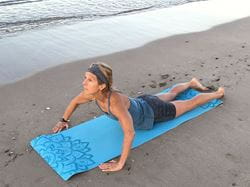
This pose engages the rhomboids and stretches the sternocleidomastoid muscles in the front of the neck. Start in the prone position on your mat. Place hands alongside your armpits and push up to a low cobra with your hands positioned slightly in front of your shoulders. Walk your hands outside your mat and position your fingers inward at about 45 degrees (less if it causes any wrist or shoulder discomfort).
Bow your head slightly. Pull the hands away from each other, broadening your upper back and engaging the muscles between your shoulder blades before you lift up into a wide cobra. Avoid constricting back of the neck and do not allow shoulders to lift toward the ears. Slowly raise your chin and gaze, lengthening the front of the neck and elevating the crown of the head. Hold for a breath or two and slowly release down. Repeat three or four times.
Multifidus (Spinal Extensor) Strengthener
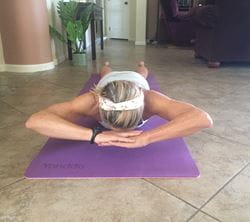

Start in the prone position on your mat. Rest your forehead on top of your folded hands. Start with your right hand folded over the left. Raise elbows up from floor and shift them slightly forward until a little squeeze is felt between your shoulder blades. Bow your head slightly and slowly raise your head, connected to your folded hands, away from the floor. Hold for three deep breaths and slowly lower. Change the cross of the hands and repeat.
Bound Angle Chest and Throat Opener
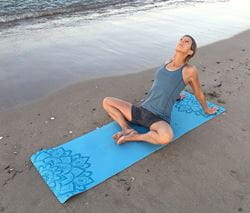
Sit in bound angle (Baddha Konasana) pose with your hips open and the soles of your feet touching. Place your hands a foot or so behind your hips, hands pointing at an angle to the back. Place hands on a block or blanket if it makes you more comfortable. Focus on pressing hands away from each other and expanding the space in your chest and throat. Keep your neck lengthening, shoulders relaxed away from the ears. Hold for five to 10 slow, deep breaths.
Thoracic Spine Release
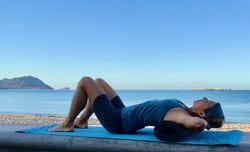
Position your upper back over a rolled up mat or large towel, possibly with folded towels above and below it for more comfort. Place interlaced hands behind your head and allow your head to rest back toward the floor and feel your chest space expand and the tightness release from your rounded upper back. You can stay in this position for up to five minutes or as long as it’s comfortable.
Why Wait?
The best time to get started on these simple activities is today. More comfortable and fluid movement and better swimming awaits.
Categories:
- Technique and Training
- Health and Nutrition
SIGN UP FOR UPDATES FROM USMS
















